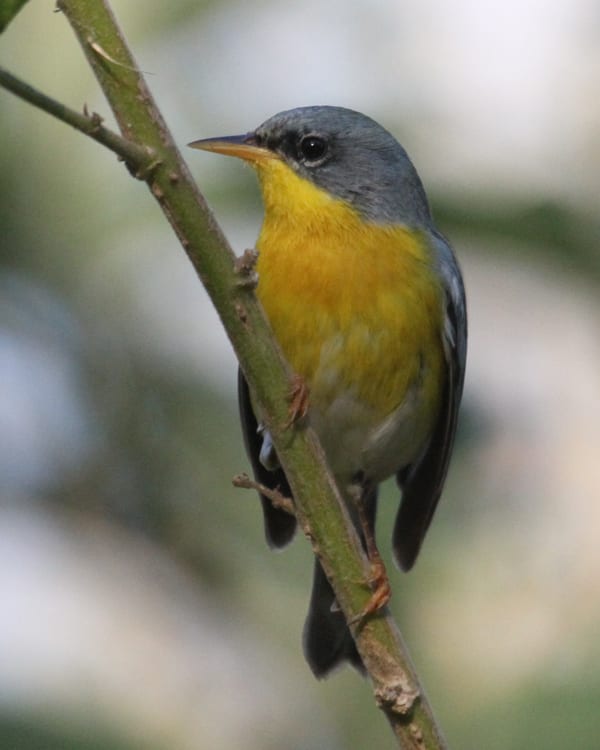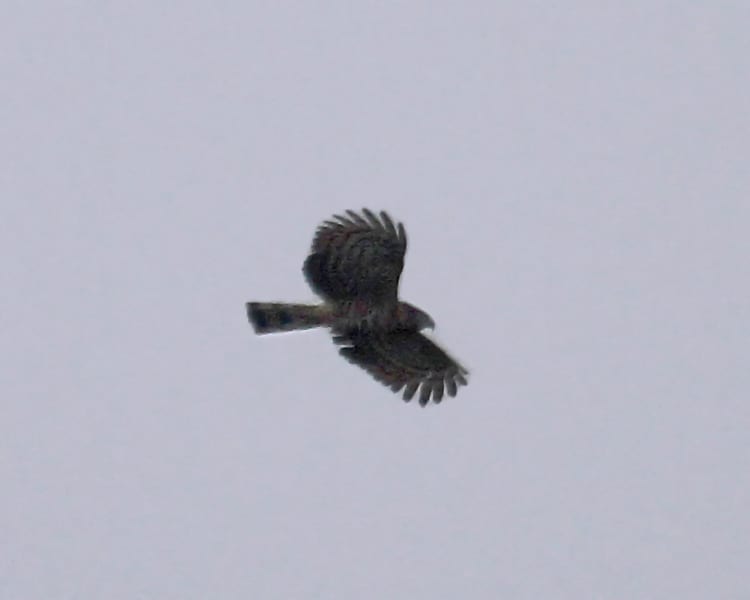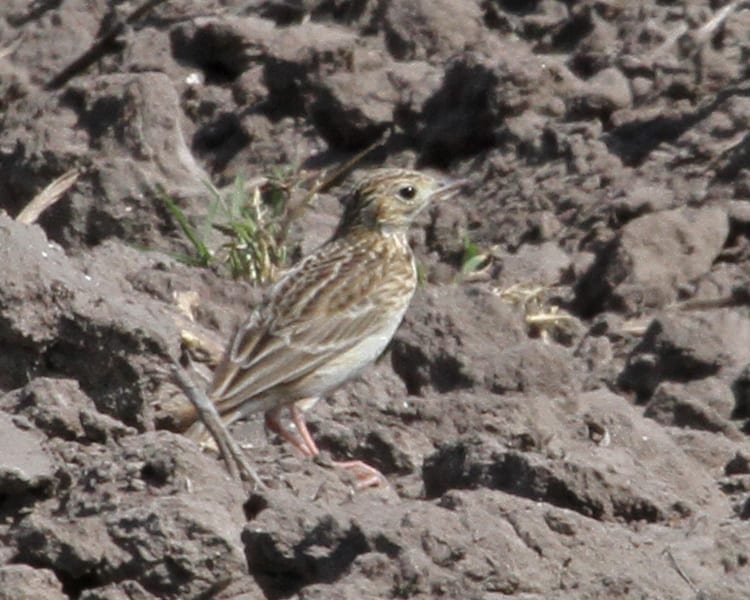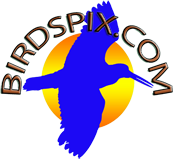February 13 – 16: The lower Rio Grand Valley of Texas has long been regarded as one of North America’s “must visit” birding destinations because of its large offering of specialty species, a good number of which are seen nowhere else in North America. One such species is the Hook-billed Kite, an uncommon tropical raptor not often seen even in Texas. U.S. sightings have generally been limited to rare brief high fly-overs, most often over the Rio Grande itself, however this January a family unit of five birds was discovered feeding daily among the mesquites in Mission Nature Park, giving U.S. birders a virtually unprecedented opportunity to look for this species with at least some reasonable hope of success. That, along with the continuing Tropical Parula at Edinburg Scenic Nature Center, enticed me to make a focused third trip to the Valley, following the two prior (more general) visits there in 2009 and 2012.
I arrived in McAllen at 4:30 PM on February 13, and was at the kite site by 5 PM where I remained until sunset with no luck. The following morning I was at Edinburg by 7 AM because the nature center was going to be closed for the entire weekend and this one day would be my only opportunity there. As it turned out, the Tropical Parula, a small warbler that is common in the tropics but rare in the U.S., was not hard to find in and around its favorite Coma Tree, but from the path this tree was backlit at this time of day, and photography was limited by the bad lighting to just a few poor images, so I decided to look for the kite again (less than fifteen miles away) and return at 2 PM. I knew full well that midday was not optimal for the kites, but one can’t be everywhere first thing in the morning, and it wasn’t a particular surprise that no kites were seen.
Back at Edinburg, a Tennessee couple and I staked out the Parula tree for three hours to no avail. The Nature Center was closing at 5 PM, and I was just getting ready to follow the couple back to the parking lot, when along came Javi Gonzalez, a staff member to whom I had been introduced in the morning, and Javi immediately spotted the bird. Since it was now after closing time, I would have been out of luck had not Javi generously taken it upon himself to ask permission to stay late to lock the gate himself. That’s what made the “Eureka” moment possible.
 The Tropical Parula, which had been giving just fleeting obstructed glimpses through the foliage at the treetop, suddenly flew down into a low shrub at eye level less than ten feet from us and proceeded to alternately pose and flycatch in full view for the next fifteen minutes. It was so unexpected and so extraordinary that if I didn’t know better it seemed almost as if this little bird was knowingly putting on a private show especially for us. Javi has seen this bird every day and says he has never seen this behavior before, nor seen the bird in full view so close in.
The Tropical Parula, which had been giving just fleeting obstructed glimpses through the foliage at the treetop, suddenly flew down into a low shrub at eye level less than ten feet from us and proceeded to alternately pose and flycatch in full view for the next fifteen minutes. It was so unexpected and so extraordinary that if I didn’t know better it seemed almost as if this little bird was knowingly putting on a private show especially for us. Javi has seen this bird every day and says he has never seen this behavior before, nor seen the bird in full view so close in.
The next morning the entire area was socked in with pea soup fog. I went back to Mission Nature Park where a sizable group of Saturday birders were already gathering up on the east side of the levee hoping for a Hook-billed Kite sighting. The fog had mostly lifted by 9:45, and at exactly 10:05, from my spot down at the closed bridge, I spotted a mid-sized bird approaching over the levee some two hundred yards to the west. Paddle-shaped wings – yes, the kite! I fired off a burst, and for a moment it looked like it would fly over, but then it caught an updraft, circled a single time, (just one more quick burst), flew off to the southwest, and was gone. The photos were distant, but the ID was good. Three birders on the west portion of the levee got the best view, but I don’t think any of the group on the east side saw the bird at all. Fellow birders Melissa and Wade Rowley, with whom I exchanged status texts during the three day visit got some really wonderful photos of the kites some two weeks earlier.
east side of the levee hoping for a Hook-billed Kite sighting. The fog had mostly lifted by 9:45, and at exactly 10:05, from my spot down at the closed bridge, I spotted a mid-sized bird approaching over the levee some two hundred yards to the west. Paddle-shaped wings – yes, the kite! I fired off a burst, and for a moment it looked like it would fly over, but then it caught an updraft, circled a single time, (just one more quick burst), flew off to the southwest, and was gone. The photos were distant, but the ID was good. Three birders on the west portion of the levee got the best view, but I don’t think any of the group on the east side saw the bird at all. Fellow birders Melissa and Wade Rowley, with whom I exchanged status texts during the three day visit got some really wonderful photos of the kites some two weeks earlier.
 After lunch I drove up route 77 to Sebastian to look for Mountain Plover along CR1600, a narrow dirt farm road that is a known wintering spot for them. Melissa and Wade got there first, and although we didn’t find any plovers, by the time I arrived they had discovered a few Sprague’s Pipits among the more numerous Horned Larks in the freshly plowed fields – a surprise life bird for all three of us.
After lunch I drove up route 77 to Sebastian to look for Mountain Plover along CR1600, a narrow dirt farm road that is a known wintering spot for them. Melissa and Wade got there first, and although we didn’t find any plovers, by the time I arrived they had discovered a few Sprague’s Pipits among the more numerous Horned Larks in the freshly plowed fields – a surprise life bird for all three of us.
Later in the afternoon I met Melissa and Wade again along the Old Port Isabel Road at a spot where the previous day they had had an unusual encounter with an Aplomado Falcon fighting with a White-tailed Kite and Wade got some amazing photos. We stayed until dark, but the only Aplomado Falcon sighting was on a pole so far in the distance that we could ID it only through Melissa’s scope. I had a similar distant view of two Aplomados in 2012, but I haven’t counted either sighting, and after three visits to the Valley still no photos. My new nemesis bird.
Sunday morning I tried again for the Hook-billed Kites, but the park was busy with joggers, dog walkers, and bicyclists, and in addition the border patrol was trying to cordon off a group of “runners” (i.e. illegals who had just come over the Mexican border), and there was a helicopter and all manner of official vehicles and even mounted police. It was all far too much bustle for the shy kites, which never showed.


